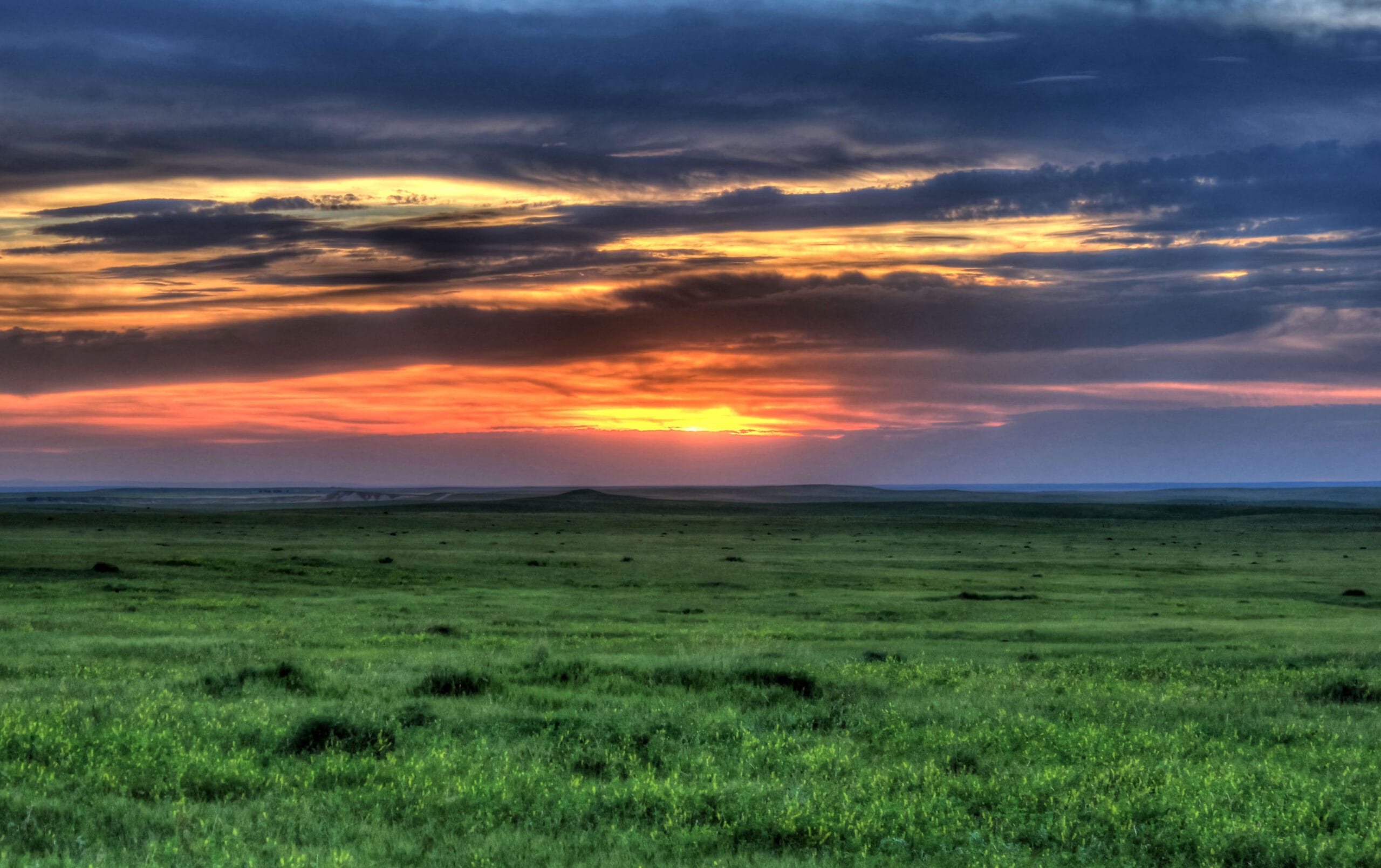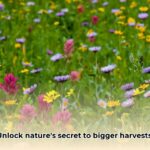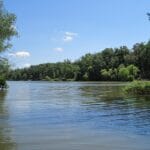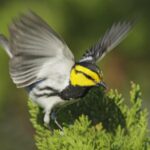The Fight for Survival: Why America’s Grasslands Matter
Picture this: a boundless sea of grass, rippling in the wind, stretching as far as the eye can see. This is the beauty of America’s grasslands, a vital ecosystem facing a hidden crisis. Habitat loss, climate change, and unsustainable land management practices threaten these landscapes, jeopardizing their vital role in our world. Every year, we lose about 2 million acres of grasslands – the equivalent of a national park disappearing annually. This loss is primarily driven by agricultural expansion, urban development, and the conversion of grasslands for other uses. Climate change further exacerbates the issue, disrupting rainfall patterns and increasing the frequency of extreme weather events.
Facing these challenges head-on is the American Forage and Grassland Council (AFGC) and its inspiring initiative, the Mid-America Grassland Evaluation Contest (AMO).
[https://www.lolaapp.com/america-grassland-amo]
AMO: Championing Grassland Conservation
Imagine the AMO as a collaborative competition, uniting ranchers, farmers, scientists, and grassland enthusiasts in a shared mission to conserve these vital ecosystems. This unique approach fosters knowledge sharing, innovative solutions, and a collective dedication to protecting America’s grasslands for generations to come.
Here’s how the AMO is making a difference:
- Sustainable Grazing: The AMO promotes grazing practices that mimic natural processes, ensuring livestock thrive while maintaining a healthy ecosystem. This delicate balance prevents overgrazing and allows grasslands to flourish.
- Restoring What’s Lost: Through various initiatives, the AMO supports projects dedicated to restoring native grasslands. Planting native grasses and wildflowers not only beautifies the landscape but also provides crucial food sources and shelter for wildlife.
- Combating Invasive Species: Invasive species can wreak havoc on grassland ecosystems. The AMO empowers individuals to identify and manage these invaders, ensuring native plants and animals have a fighting chance.
- Fostering Innovation: The AMO encourages fresh perspectives and novel approaches to conservation. This includes leveraging technology for grassland health monitoring, developing adaptive grazing strategies, and optimizing water resource management.
Green Shoots of Success:
Thanks to the AMO’s unwavering efforts, a wave of positive change is sweeping across America’s grasslands:
- Millions of Acres Restored: Imagine vast stretches of land, once dominated by crops, now teeming with life as thriving grasslands. This incredible feat is a testament to the power of dedicated restoration efforts.
- Grazing Smarter, Not Harder: Ranchers are increasingly adopting innovative rotational grazing systems, moving livestock between pastures to prevent overgrazing and promote healthy soil.
- Fighting Fire with Fire (Responsibly): Controlled burns, also known as prescribed fires, are being strategically implemented to manage grasslands. This seemingly counterintuitive practice helps control invasive species, encouraging new growth and mimicking natural fire cycles.
A Shared Vision for the Future:
Protecting America’s grasslands requires a collective effort, with the AMO serving as a vital catalyst in this crucial mission. By fostering collaboration, innovation, and a deep-rooted respect for these landscapes, we can ensure that future generations inherit the beauty and ecological significance of America’s grasslands.
Beyond “Prairie”: Exploring the Diverse Grasslands of America
The term “prairie” often conjures up images of the iconic Great Plains. While accurate, it only scratches the surface of the remarkable diversity found in America’s grasslands. From the towering grasses of the tallgrass prairie to the drought-resistant species of the shortgrass prairie, these ecosystems showcase nature’s remarkable adaptability. And these grasslands aren’t confined to the heartland; they grace the landscape from coast to coast, each region boasting unique characteristics and ecological importance.
Unveiling the Types of American Grasslands:
- Tallgrass Prairie: Imagine venturing through a sea of grasses so tall they could dwarf an elephant! Reaching heights of up to 12 feet, the tallgrass prairie, primarily found in the eastern Great Plains, is a sight to behold. These areas are known for their rich biodiversity and fertile soils.
- Mixed-grass Prairie: Journeying westward, a gradual shift occurs as the landscape transitions to the mixed-grass prairie. Here, a greater variety of grass heights and species co-exist, adapting to the increasingly dry conditions of the western Great Plains.
- Shortgrass Prairie: As the terrain grows drier, the shortgrass prairie emerges, dominating the westernmost reaches of the Great Plains. These hardy grasses, typically under 2 feet tall, have evolved to thrive in arid environments where rainfall is a precious commodity.
Beyond these primary classifications, other terms like “steppes” and “savannas” further categorize grasslands based on specific conditions and vegetation. Steppes, found in more arid regions, are characterized by their sparse vegetation, while savannas feature scattered trees interspersed among grasses.
A Coast-to-Coast Phenomenon:
While the Great Plains may hold the most extensive grasslands, pockets of these vital ecosystems exist throughout the US:
- The Palouse Prairie of the Pacific Northwest showcases a unique landscape shaped by volcanic activity and wind-blown soil.
- California’s grasslands burst with vibrant wildflowers, creating a breathtaking mosaic of color and life.
- Even the Southeast, known for its forests, harbors hidden gems of grassland ecosystems.
Sadly, the historical range of these vital grasslands extended much further east into the Midwest. However, extensive conversion to farmland has significantly reduced their reach, making the remaining areas even more precious.
Understanding Their Importance:
Grasslands are far more than just scenic landscapes. They’re bustling hubs of biodiversity, supporting a rich tapestry of life.
- Iconic species like bison, prairie dogs, pronghorns, and a myriad of grassland birds rely on these ecosystems for their survival.
- Their deep root systems act as natural carbon sinks, playing a vital role in combating climate change.
- The rich soils created by these grasslands are some of the most fertile on Earth, essential for growing the food we depend upon.
A Shared History, a Call to Action:
For centuries, Native American communities have lived in harmony with these grasslands, their cultures and livelihoods intertwined with the health of these ecosystems. The arrival of European settlers, however, brought about significant changes. Vast swaths of grassland were plowed under to make way for agriculture, particularly for crops like wheat and corn.
Recognizing the importance of these vanishing landscapes, conservation efforts are gaining momentum. Organizations like the American Forage and Grassland Council (AFGC) are at the forefront of these efforts, promoting sustainable practices and restoring degraded grasslands.
Key Takeaways:
- America’s grasslands are incredibly diverse, extending beyond the commonly known “prairie.”
- These ecosystems are vital for biodiversity, carbon sequestration, and maintaining healthy soil.
- Protecting and restoring these grasslands is crucial, and dedicated efforts are underway to ensure their survival for future generations.
Unveiling the Truth About North America’s Biggest Grassland
The title of “biggest grassland in North America” often sparks debate. While many believe the Little Missouri National Grassland reigns supreme, this common misconception overshadows the true champion – the Northern Shortgrass Prairie.
Setting the Record Straight:
- Little Missouri National Grassland: Often mistakenly cited as the largest, this grassland in North Dakota spans an impressive 1,028,784 acres. However, it pales in comparison to its much larger counterpart.
- Northern Shortgrass Prairie: This sprawling giant reigns supreme, encompassing a vast area that dwarfs Little Missouri and even surpasses the size of some US states. It stretches across portions of Montana, Wyoming, Nebraska, South Dakota, North Dakota, and extends into the Canadian provinces of Alberta and Saskatchewan.
Understanding the Discrepancy:
The confusion often stems from conflating National Grasslands with broader ecoregions. National Grasslands, like Little Missouri, are managed units within these larger ecosystems. While National Grasslands play a vital role in conservation, they often represent fragments of much larger, interconnected grasslands.
Why Size Matters:
Recognizing the true scale of North America’s grasslands is crucial for appreciating their ecological importance. The Northern Shortgrass Prairie stands as a testament to the interconnectedness of nature and highlights the need for conservation efforts that extend beyond political boundaries.
Exploring the Northern Shortgrass Prairie:
This vast grassland is far more than just an expansive landscape. It’s a vibrant ecosystem, teeming with life and playing a vital role in the health of our planet.
- Biodiversity Haven: The Northern Shortgrass Prairie provides a haven for a diverse array of plant and animal species, many specially adapted to its unique conditions.
- Carbon Sequestration Powerhouse: Like all grasslands, it plays a crucial role in capturing and storing carbon dioxide from the atmosphere, helping to mitigate climate change.
- Supporting Livelihoods: This grassland is also essential for ranching and agriculture, showcasing the delicate balance between human activities and ecological preservation.
Challenges and Conservation Efforts:
The vastness of the Northern Shortgrass Prairie doesn’t make it immune to threats. Habitat fragmentation, invasive species, and climate change pose significant challenges to this vital ecosystem. Recognizing these threats, organizations and individuals are actively working to protect and restore this grassland for generations to come.
Key Takeaways:
- The Northern Shortgrass Prairie is the true champion of North American grasslands, vastly exceeding the size of the often-cited Little Missouri National Grassland.
- Understanding the distinction between National Grasslands and broader ecoregions is essential for accurately assessing the scale and significance of these ecosystems.
- The Northern Shortgrass Prairie plays a vital role in biodiversity, carbon sequestration, and supporting local economies, highlighting the need for continued conservation efforts.
By acknowledging the true scale and ecological importance of North America’s largest grassland, we can better appreciate the need to protect and preserve these vital landscapes.
- SYBAU See You Baby Meaning: Gen Z Slang Evolves - July 1, 2025
- Unlock Your Inner Youth: Lifestyle Secrets for a Vibrant Life - July 1, 2025
- Decode SYBAU Meaning: Gen Z Slang Explained - July 1, 2025






